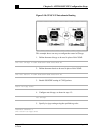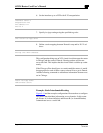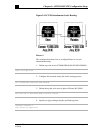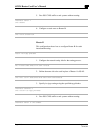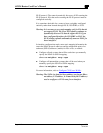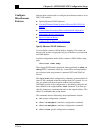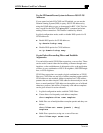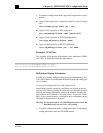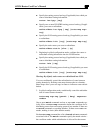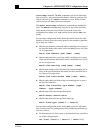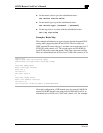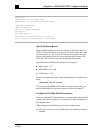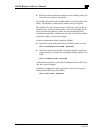
AI2524 Router Card User’s Manual
Page 9-44 August 1997
2524UM
Use the IP DomainNa me System to Discover ISO CLNS
Addresses
If your router has both ISO CLNS and IP enabled, you can use the
Domain Naming System (DNS) to query ISO CLNS addresses by
using the NSAP address type, as documented in RFC 1348. This fea-
ture is useful for the ISO CLNS
ping
EXEC command and when
making Telnet connections. This feature is enabled by default.
In global configuration mode, enable or disable DNS queries for IS
CLNS addresses:
z
Enable DNS queries for CLNS addresses.
ip domain-lookup nsap
z
Disable DNS queries for CLNS addresses.
no ip domain-lookup nsap
Create Packet-Forwarding Filters and Establish
Adjacencies
You can build powerful CLNS filter expressions, or access lists. These
can be used to control either the forwarding of frames through route
interfaces, or the establishment of adjacencies with, or the application
of filters to, any combination of ES or IS neighbors, ISO IGRP neigh-
bors, or IS-IS neighbors.
CLNS filter expressions are complex logical combinations of CLNS
filter sets. CLNS filter sets are lists of address templates against which
CLNS addresses are matched. Address templates are CLNS address
patterns that are either simple CLNS addresses that match just one ad-
dress, or match multiple CLNS addresses through the use of wildcard
characters, prefixes, and suffixes. Frequently used address templates
can be given aliases for easier reference.
1. In global configuration mode, establish CLNS filters:
z
Create aliases for frequently used address templates.
clns template-alias
name template
z
Build filter sets of multiple address template permit and deny con-
ditions.
clns filter-set
sname
[permit | deny]
template
z
Build filter expressions, using one or more filter sets.
clns filter-expr
ename term




